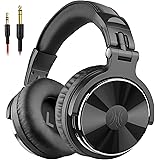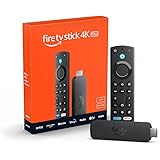Hanes Men's EcoSmart Fleece Hoodie Sweatshirt
$15.24 (as of February 10, 2025 12:48 GMT +00:00 - More infoProduct prices and availability are accurate as of the date/time indicated and are subject to change. Any price and availability information displayed on [relevant Amazon Site(s), as applicable] at the time of purchase will apply to the purchase of this product.)Mac Book Pro Charger - 118W USB C Charger Fast Charger Compatible with USB C Port MacBook pro/Air, M1 M2 M3 M4, ipad Pro, Samsung Galaxy and All USB C Device, Include Charge Cable
$26.83 (as of February 10, 2025 12:48 GMT +00:00 - More infoProduct prices and availability are accurate as of the date/time indicated and are subject to change. Any price and availability information displayed on [relevant Amazon Site(s), as applicable] at the time of purchase will apply to the purchase of this product.)Fruit of the Loom Men's Eversoft Cotton Stay Tucked Crew T-shirt
$15.00 (as of February 10, 2025 12:48 GMT +00:00 - More infoProduct prices and availability are accurate as of the date/time indicated and are subject to change. Any price and availability information displayed on [relevant Amazon Site(s), as applicable] at the time of purchase will apply to the purchase of this product.)Owala FreeSip Insulated Stainless Steel Water Bottle with Straw for Sports, Travel, and School BPA-Free Sports Water Bottle, 24 oz, Very, Very Dark
$27.99 (as of February 10, 2025 12:48 GMT +00:00 - More infoProduct prices and availability are accurate as of the date/time indicated and are subject to change. Any price and availability information displayed on [relevant Amazon Site(s), as applicable] at the time of purchase will apply to the purchase of this product.)Crocs Unisex Adult Classic Clog
$40.11 (as of February 10, 2025 12:48 GMT +00:00 - More infoProduct prices and availability are accurate as of the date/time indicated and are subject to change. Any price and availability information displayed on [relevant Amazon Site(s), as applicable] at the time of purchase will apply to the purchase of this product.)Clipboards have been an essential tool for note-taking and data collection for centuries. From ancient civilizations to modern-day professionals, clipboards have played a significant role in recording information, conveying messages, and facilitating communication. In this article, we will delve into the history of clipboards, their various types, and their applications in different industries.
A Brief History of Clipboards
The earliest known use of clipboards dates back to ancient Greece and Rome, where wooden boards with clamps were used for writing and drawing. The modern clipboard, however, is credited to the early 20th century, when it was invented by a man named Louis E. Miller in 1908. Miller’s design featured a metal clip that held papers in place, making it easier to write on them.
Types of Clipboards
Over time, clipboards have evolved to cater to various needs and preferences. Some common types of clipboards include:
- Standard Clipboards: These are the most basic type of clipboard, featuring a rectangular board with a metal clip.
- Large Clipboards: Designed for heavy-duty use, these clipboards have larger boards and sturdier clips.
- Small Clipboards: Ideal for portable use, small clipboards are compact and lightweight.
- Ergonomic Clipboards: Featuring contoured designs and cushioned grips, ergonomic clipboards reduce strain on the user’s hand and wrist.
- Digital Clipboards: With the rise of digital technology, some clipboards now come with built-in screens, keyboards, or styluses for note-taking and data collection.
Materials and Construction
Clipboards are made from a variety of materials, including:
- Wood: Traditional wooden clipboards offer a classic look and feel.
- Plastic: Durable and lightweight, plastic clipboards are easy to clean and maintain.
- Metal: Strong and sturdy, metal clipboards are ideal for heavy-duty use.
- Composite Materials: Some clipboards feature composite materials, combining the benefits of different materials.
Applications in Different Industries
Clipboards have a wide range of applications across various industries, including:
- Healthcare: Clipboards are used extensively in hospitals and clinics for patient data collection, medical records, and treatment plans.
- Construction: On-site workers use clipboards to document progress, note measurements, and communicate with colleagues.
- Education: Students and teachers rely on clipboards for taking notes, recording grades, and tracking assignments.
- Government: Clipboards are used by government officials to collect data, record transactions, and issue documents.
Modern Features and Innovations
In recent years, clipboards have incorporated various modern features and innovations, such as:
- Wireless Connectivity: Some digital clipboards allow users to send notes and data wirelessly to their devices.
- Touchscreens: With built-in touchscreens, users can type notes, access apps, and interact with digital content directly on the clipboard.
- Styluses: Ergonomic styluses provide precise control and comfort for note-taking and drawing.
Conclusion
Clipboards have come a long way since their inception, evolving to meet the needs of various industries and users. From traditional wooden clipboards to modern digital devices, the evolution of clipboards reflects the changing demands of communication and data collection in today’s fast-paced world.
Whether you’re a student, professional, or simply someone who loves taking notes, there’s a clipboard out there for you. With their versatility, durability, and innovative features, clipboards remain an essential tool for note-taking and data collection across industries and applications.
Technical Specifications:
- Standard Clipboards: Rectangular board with metal clip (varies in size)
- Large Clipboards: Larger boards (up to 18 inches) with sturdier clips
- Small Clipboards: Compact, lightweight designs (varies in size)
- Ergonomic Clipboards: Contoured designs and cushioned grips for reduced strain
- Digital Clipboards: Built-in screens, keyboards, or styluses for note-taking and data collection
Note: Technical specifications may vary depending on the manufacturer and specific model.













